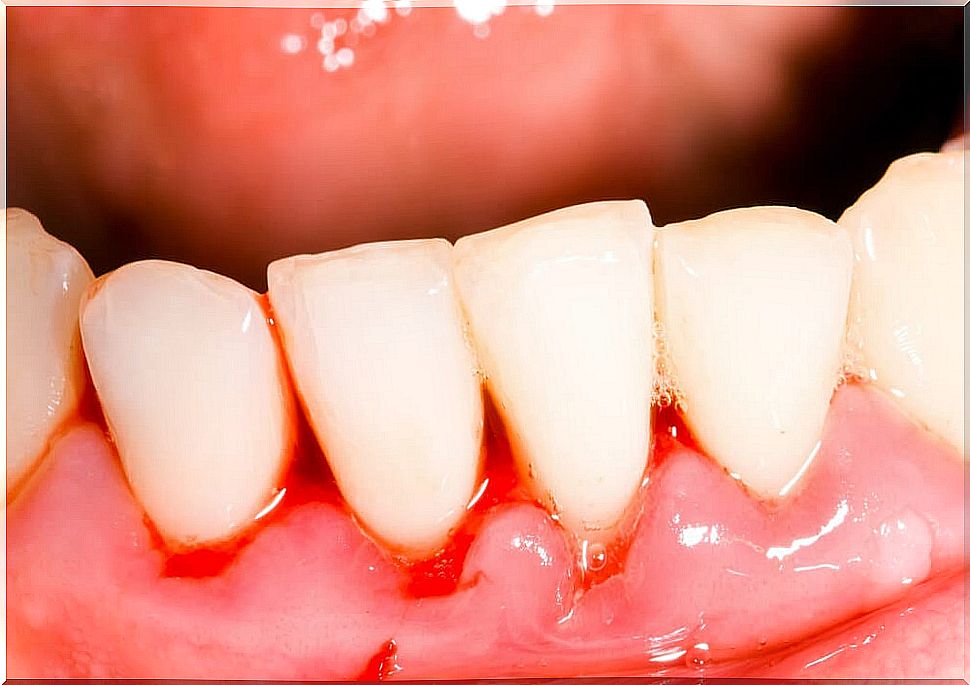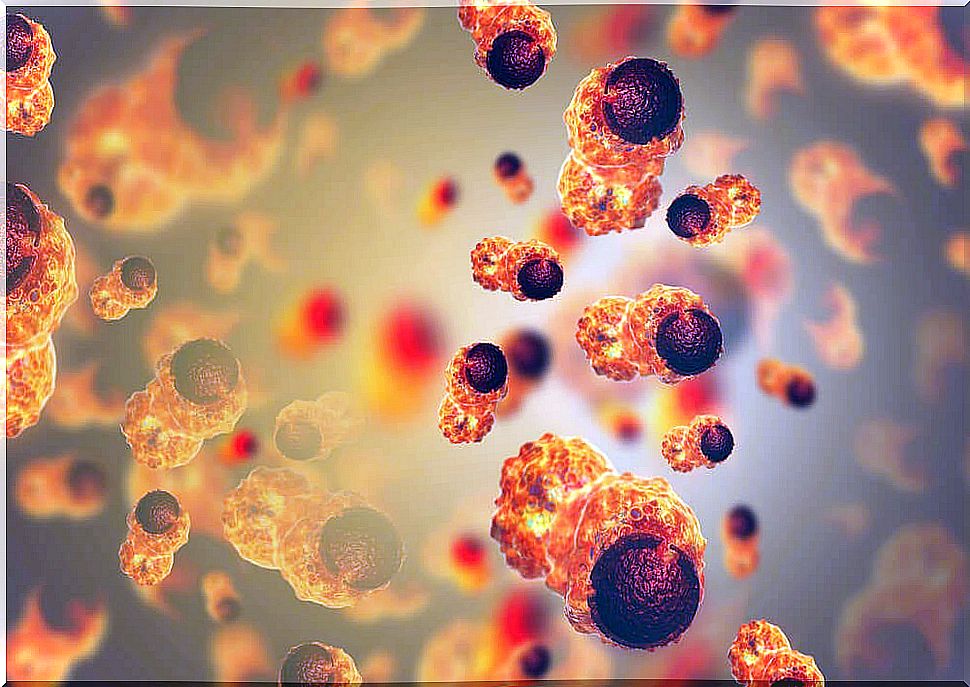Why Do My Gums Get White?
Although some people ignore them, the gums are a part of the body that can reflect that something in the body is not working well. Therefore, it is important that you pay attention if you have white or pale gums to make a visit to the dentist.
In most cases they do not represent a serious ailment. However, experts point out that they are sometimes the number one sign that will alert you if you have a complex clinical picture.
Here are some of the reasons why they can turn white.
Excess plaque in the mouth, a cause of white gums
According to the following article published by the International Journals of Academic Research World (IJARW), excess plaque is the most common cause of gum whitening.
The plaque forms a kind of film that adheres both to this area and to the teeth, and even to the tongue. It usually appears after every meal or when you wake up and, if not removed, turns into tartar that causes inflammation and bad breath.
Bad breath and inflammation

The best way to avoid this problem is to use oral cleaning products such as a brush, toothpaste, dental floss and rinse every day (preferably, if these are indicated to combat bacterial plaque).
Leukoplakia
People with leukoplakia have thick white patches that form on the gums, roof of the mouth, and cheeks. Sometimes they can invade the tongue, and although the causes are still unknown, the following article published by the US National Library of Medicine attributes this problem to tobacco use and alcohol abuse.
In most cases, leukoplakia is a benign disease. However, caution must be exercised as it may indicate the presence of cancer in its early stage. In fact, cases of cancer in the mouth usually originate under the tongue and can also appear accompanied by some white patches.
On the other hand, it differs from other oral diseases because its spots appear irregularly. Some appear as a hard, indelible plaque, and others appear as thick patches accompanied by red rosettes; known as erythroplasia.
Oral candidiasis

It is a fungal infection caused by the overgrowth of the Candida albicans fungus in the oral cavity. Specialists say that this problem tends to affect babies more, since it occurs when the person’s immune system is drastically weakened.
The main symptom of this disease is the appearance of white and prominent plaques on the tongue, gums, lateral areas of the mouth and the palate. Some of these injuries can even reach the throat.
Other consequences of suffering from oral candidiasis are:
- Pain when swallowing
- Dry mouth
- Possible bleeding when lesions are handled or scraped.
The lesions produced by this disease should not be abused or scraped. In fact, to eliminate them the doctor prescribes antifungal formulas that make the fungus regress.
Anemia can lead to white gums
According to an article published in 2020 by the Journal of the Mexican Dental Association , one of the symptoms of anemia is paleness and weakness of the gums.
The condition is caused by a decrease in red blood cells in the bloodstream, which depletes oxygen from the body’s tissues and causes them to become weak. Also, the body may show the following signs if you suffer from anemia:
- Tiredness.
- Dizziness
- Confusion.
- Irregular heartbeat
- Drowsiness.
- Shortness of breath.
- Headaches.
- Dizziness
- Low blood pressure.
Gingivitis

This disease causes deformation of the gums and their redness, swelling and bleeding. In turn, its origin is often caused by the growth of wisdom teeth, which produces a concavity where the pathogen or bacteria is deposited.
Oral cancer, a possible cause of white gums

This one of the most serious disorders that announces white gums. Also, this disease is one of the main reasons why regular check-ups with the dentist are vital. The reason? Its symptoms can be confused with those of candidiasis or gingivitis.
This type of cancer usually attacks the lips and tongue. However, in some cases it can involve other areas of the oral cavity, such as the inner part of the cheeks, the gums or the palate.
Something that distinguishes this disease from the others, according to the American Cancer Association, is that the patient who suffers from it will present a lump in the mouth that does not heal, changes in the voice and a sensation of periodic numbness in the cavity.








